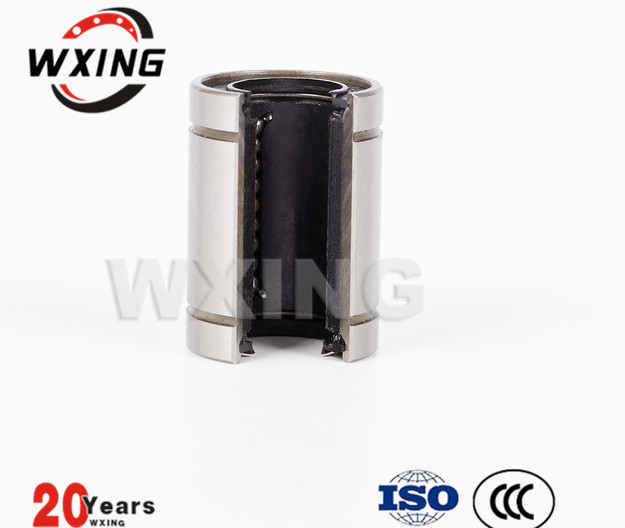CONTACT US
Zhejiang waxing electromechanical co.LTD.,Factory located in Shandong,Headquarters located in Zhejiang,China.
 The physical properties of stainless steel are mainly expressed in the following aspects:
The physical properties of stainless steel are mainly expressed in the following aspects:
Coefficient of thermal expansion
A change in the measured element of a substance due to a change in temperature.The coefficient of expansion is the slope of the dilatation-temperature curve, the instantaneous coefficient of expansion is the slope at a particular temperature, and the average slope between two specified temperatures is the average coefficient of thermal expansion.The coefficient of expansion can be expressed in terms of volume or in terms of length, usually in terms of length.
(2) density
The density of a substance is the mass per unit volume of the substance in kilograms /m3 or 1b/in3.
Modulus of elasticity
When the force applied to the two ends of the edge per unit length can cause a unit change in the length of the object, the force required per unit area is called the modulus of elasticity.The units are 1b/in3 or N/m3.
(4) resistivity
In unit length measure the resistance between two opposite of cube material, unit with Ω m, mu Ω, cm or Ω (waste)/(circular mil. Ft).
(5) magnetic permeability
The dimensionless coefficient is the ratio of the magnetic induction intensity to the magnetic field intensity.
Melting temperature range
Determine the starting and finishing temperatures of the alloy.
All landowners heat
The amount of heat required to change the temperature of a substance by 1 degree per unit mass.In both imperial and CGs systems the specific heat value is the same, because the unit of heat (Biu or CAL) depends on the amount of heat required to raise a unit of mass of water by 1 degree.The value of specific heat in the international system of units is different from that in the imperial system or the CGS system, because the unit of energy (J) is defined in a different way.The units of specific heat are Btu(1b•0F) and J/ (kg •k).
The thermal conductivity for today
A measure of the rate at which a substance conducts heat.When the temperature gradient of 1 degree per unit length is established on the material of unit cross-sectional area, the thermal conductivity is defined as the heat transmitted per unit time, and the unit of thermal conductivity is Btu/(h•ft•0F) or w/(m •K).
9 thermal diffusivity
Is a property used to determine the forward velocity of internal temperature of a substance. It is the ratio of thermal conductivity to the product of heat and density. The unit of thermal diffusivity is expressed in terms of Btu/(h•ft•0F) or w/(m•k).
1, 303 is free cutting materials, we mainly deal with 303 round steel and 45 steel.
2. The relative machinability of 1Cr18Ni9Ti stainless steel is about 0.3-05, which is a kind of difficult cutting material, and its machinability is mainly shown in
High temperature strength and high temperature hardness, general steel cutting, with the increase in cutting temperature its strength will significantly reduce, chip is easy to be cut off, and 1Cr18Ni9Ti at 700 degrees still can not reduce its mechanical properties, so chip is not easy to be cut off, cutting force is large in the cutting process, tool easy to wear.
High plasticity and toughness, although 1 cr18ni9ti tensile strength and hardness is not high, but the comprehensive performance is very good, high plasticity and toughness, its elongation, reduction of area and impact value is higher, 1 cr18ni9ti elongation is 40%, is 40 # 210-237%, is 45 # 250-280%, is 20 cr, 400-500% of 40 cr steel, so curled chip is not easy to cut off, and broken, the function of the chip deformation consumed more,For example, cutting a certain volume of 1Cr18Ni9Ti consumes about 50% more energy than cutting the same volume of low carbon steel, and most of the energy is converted into heat energy, making the cutting temperature rise.
In 1Cr18Ni9Ti is not easy to process, chip is not easy to cut off and broken, so the friction between the tool and the workpiece heat is also more, and stainless steel 1Cr18Ni9Ti thermal conductivity is low (about 1/2-1/3 of ordinary steel), poor heat dissipation, by the chip heat away less.Most of the heat is absorbed by the tool, resulting in increased tool temperature and increased tool wear.
Steel http://steel.zcwz.com/ has a strong affinity for other metal materials.Therefore, when in contact with other metals, a certain temperature and pressure will produce adhesion phenomenon.In the cutting process, the tool is easy to produce chip tumor, not easy to obtain the surface roughness grade of high machining surface.
Strong hardening tendency.Austenitic stainless steel strength is generally b=539Mpa, but at room temperature cold processing, due to machining hardening and deformation will induce martensite transformation, so that the strength is increased to b= 1568mpa, which greatly increases the cutting friction, wear and cutting force, easy to make the tool wear, and affect the surface roughness of the workpiece.
There are many fine carbide (such as TiC) particles in 1Cr18Ni9Ti material, which will aggravate the wear of the cutting tool.
Material melting point is low, easy to stick to the knife, cutting process is easy to form chip tumor, due to the toughness of stainless steel, in the cutting process, there is a lot of pressure and high temperature between the cutting tool leading surface and chip, chip is easy to adhere to the blade, the formation of chip tumor, affecting the surface processing quality.
Therefore, the machinability of 1Cr18Ni9Ti is very poor, especially in intermittent cutting, the tool is easy to wear and bond damage, tool service life is very low, affecting the processing efficiency, processing cost, processing accuracy and surface quality.
Copyright © 2025 Zhejiang waxing electromechanical co.LTD. | All Rights Reserved Design
Hello, please leave your name email or WhatsApp here before chat online so that we won't miss your message and contact you smoothly.